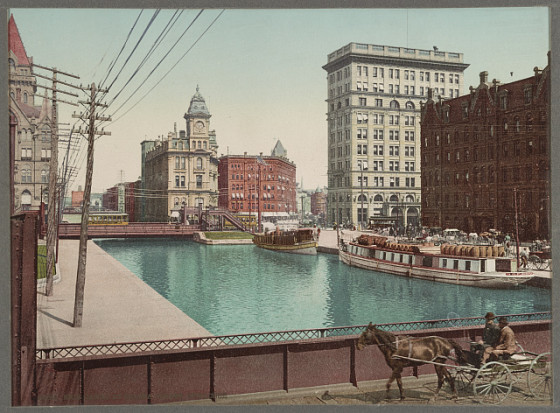The completion of Erie Canal in 1825 cemented New York’s position as the preeminent commercial city in the United States. The 363-mile long waterway, painstakingly cut through central New York wilderness over a period of eight years, connected New York City to Buffalo via the Hudson River. Unlike its rivals in Boston, Philadelphia, and Baltimore – who remained blocked by distance and the Appalachian Mountains – New York now had a corridor to access to the agricultural riches of the vast interior of the North American Continent. From Ohio to Michigan to Wisconsin and throughout the Midwest, goods could now be shipped over the Great Lakes, across the Canal, down the Hudson, and through New York’s docks out to Atlantic markets. Fueled by canal trade, the port provided the economic engine that attracted ever more people and capital to New York well into the 20th century. Source: Carol Sheriff, The Artificial River: The Erie Canal and the Paradox of Progress, 1817-1862 (New York, 1996). Written by Dr. Brett Palfreyman

